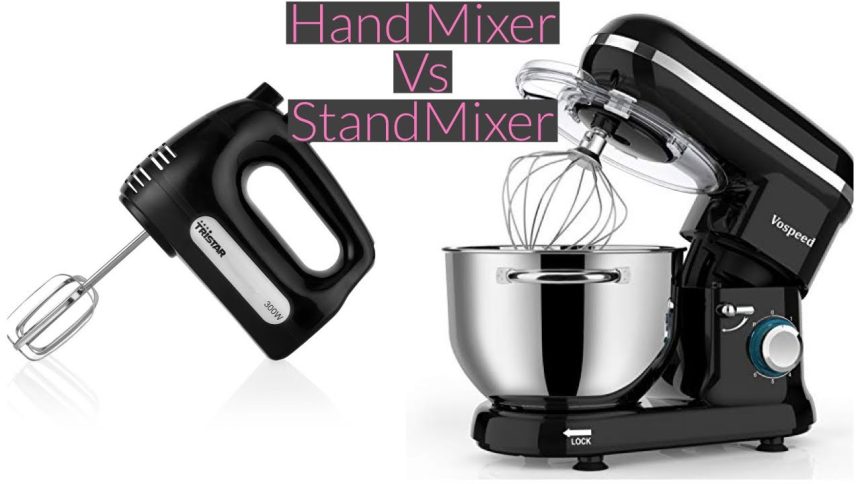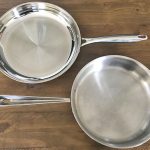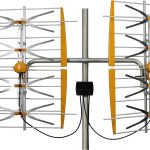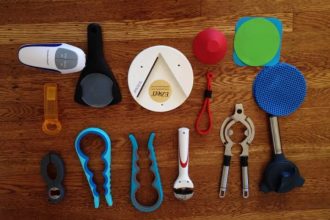A stand mixer vs hand mixer is an important decision when deciding on a new appliance for your kitchen. There are many factors to consider before making the final purchase. This article will discuss how these two mixers compare in terms of their features, capabilities and price ranges. You can then decide which one is best suited for you!
What is Stand Mixer
A stand mixer is a large, stationary version of a hand mixer. The bowl and blades are attached to the stand and most models have beaters that attach to the top of the stand. This makes it easier for you to add ingredients while mixing with less mess and fuss. Many come with multiple attachments such as meat grinder or ice cream maker.
Benefit Of Using Stand Mixer
Stand mixers come with a wide array of attachments and can perform most kitchen tasks. While they are stationary, you do not have to hold them or place them on the counter. This is especially helpful if you suffer from pain in your arms, hands or wrists. Many stand mixer models fold up for storage, which saves large amounts of space in your kitchen.
What is A Hand Mixer
A hand mixer is a small, portable version of a stand mixer. It is attached to a handle with beaters on the end. Hand mixers are usually less powerful than stand mixers, so they are best for creaming butter or sugar or mixing up batters. They cannot handle heavy doughs, though some newer models offer stronger power than their predecessors.
Benefit Of Using Hand Mixer
Hand mixers are usually much less expensive than stand mixers, so they work well for small amounts of ingredients or batters. They also take up very little space and can be thrown in a drawer if your kitchen is short on space or storage options. Hand mixers can do many of the same tasks as a stand mixer, though they are not quite as strong and cannot knead dough.
Stand Mixer Vs Hand Mixer In Comparision
Size
Compared to the size of a hand mixer, a stand mixer is relatively large. The bowl and attached pieces often measure 12 inches or more across, so you are limited in how much batter or dough it can hold. Hand mixers are much smaller and have less bulk. They usually do not need as big of a work area as their stand mixer counterpart. Many are small enough to hold in one hand.
Power
The power of a stand mixer is far superior to that of a hand mixer, which makes it better able to handle tougher jobs such as kneading dough or heavy batters. If you have arthritis or other conditions that make it difficult for you to mix dough, the stand mixer’s power makes it much more effective.
Price
Hand mixers are usually significantly less costly than stand mixers. The price mainly varies with the strength and size of the motor, so most hand mixers range between 10 and 30 dollars. Stand mixers are often far more expensive, especially those with a strong motor. Some models cost more than 400 dollars. While this is more costly than the price of most hand mixers, they can still save you money in the long run as you will not have to purchase any attachments, such as meat grinders or ice cream makers.
Functional Design
The functional design of a hand mixer is more streamlined and compact than that of a stand mixer. It does not have a separate motor head or a bulky stand to attach the bowl to. This makes it more efficient in smaller kitchens with limited counter space, though the power of the motor may be less effective for tougher jobs.
A stand mixer often has many attachments that can perform multiple tasks. This can save you time searching for the right tool to do a certain job and money, as you won’t have to buy each attachment separately. A hand mixer usually only comes with the main unit itself and one or two beaters, so it cannot perform all of the same functions of its stand mixer counterpart.
Which One is Better?
hand mixer is still able to perform many tasks that a stand mixer can. Most people will probably not need the strength and power of a stand mixer in their kitchen, so the less expensive hand mixers work great for most households. However, if you are looking for an appliance with the highest power possible and you will use it often, a stand mixer might be your best bet.
a hand mixer is usually very inexpensive compared to a stand mixer. The biggest differences between stand and hand mixers are their size and power. A stand mixer has the benefit of being more powerful and larger than most hand mixers, while a hand mixer can fit in any drawer or be stored on your countertop without taking up a lot of space. Overall, a hand mixer is best for small tasks and a stand mixer is better if you need to mix large batches or knead dough. not as powerful or durable. Stand mixers are stationary and cannot be moved while they are working, so the user can do other things while it is running. Hand mixers offer more mobility to the user and only need the strength of one arm to hold them up, making them easier on weaker hands and arms. You will also save money with a hand mixer, because stand mixers need to be supplemented with many attachments like meat grinders and ice cream makers.
Conclusion
a stand mixer might be better for many kitchen uses than a hand mixer. Hand mixers are best used for creaming butter or sugar and mixing small amounts of batter, but they cannot handle heavy doughs. Stand mixers have a higher motor power and can do most tasks in the kitchen. They may be a little bit more expensive, but they can also save you money in the long run if you purchase attachments for them. Most people will probably not need the strength and power of a stand mixer in their kitchen, so the less expensive hand mixers work great for most households. However, if you are looking for an appliance with the highest power possible and you will use it often, a stand mixer might be your best bet.







